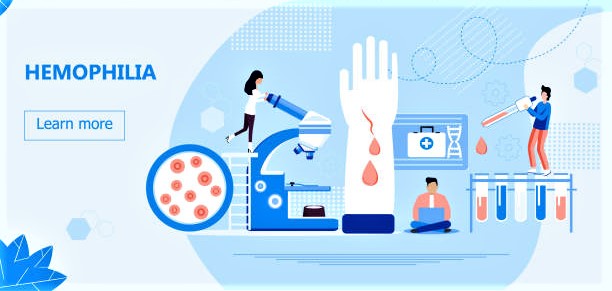ALL YOU NEED TO KNOW ABOUT HEMOPHILIA DISORDER
Hemophilia is an inherited bleeding disorder that causes the blood not to clot properly, due to the absence of one or more clotting factors leading to spontaneous bleeding (What Is Hemophilia, n.d.). Clotting factors are components found in plasma that aid the blood clotting process.
They are:
- The factor I (fibrinogen),
- 'II (prothrombin),
- 'III (tissue thromboplastin or tissue factor),
- 'IV (ionized calcium), factor V (labile factor or proaccelerin)
- 'VII (stable or proconvertin factor) and;
- 'VIII (antihemophilic factor) (Laguipo, 2021).
Hemophilia is an X-linked recessive genetic disorder and females who are the main “carriers”, transfer it to their male children (Hemophilia A - NORD, n.d.). While its incidence is constant in different populations (1 in 25,000 male births for Hemophilia B, and 1 in 5,000 male births for hemophilia A); its prevalence varies across countries, with less than 3% of cases in Africa against 18% of the global population (Diop et al., 2019).
The three forms of hemophilia are:
- Hemophilia A: caused by a lack of clotting factor VIII
- Hemophilia B: Caused by lack of factor IX.
- Hemophilia C: Refers to lack of factor XI.
Hemophilia severity is determined according to the amount of the blood clotting factors in the blood. it can either be mild, moderate, or severe (Berntorp et al., 2021). Therapeutic intervention for this disorder is a prophylactic replacement of the missing factor (Fletcher et al., 2022), which fortunately has increased the life expectancy, and quality of life for hemophiliacs (Berntorp et al., 2021).
Do you have more information on this topic?
Please share with us in the comment section below.